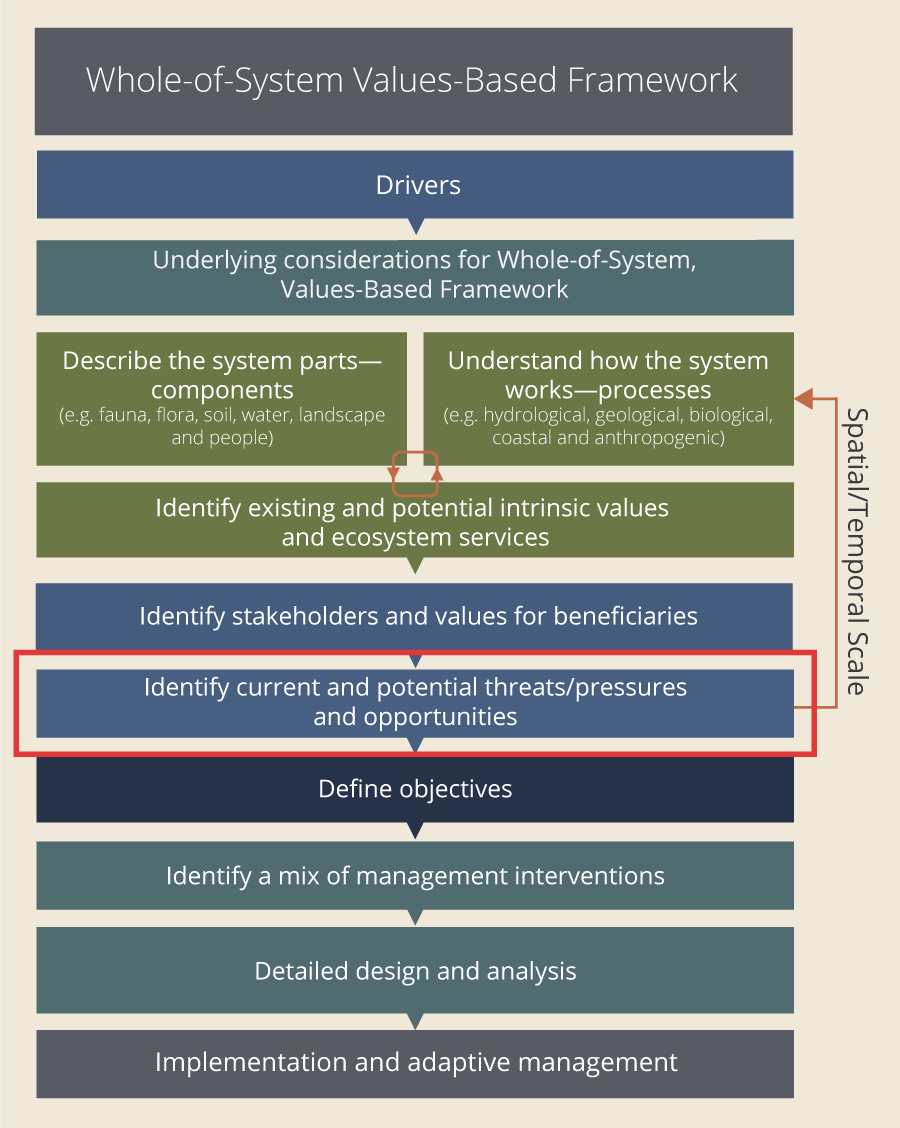|
|
Identify current and potential threats/pressures and opportunitiesPressures (sometimes called threats) can impact wetlands (aquatic ecosystems) across a range of spatial and temporal scales and can be direct or indirect. Pressures in the wetland can result in changes to intrinsic values, or a reduction in ecosystem services provided by the wetland. Identifying and documenting the current and potential threats/pressures can inform the design of management interventions that increase the likelihood that activities will maintain or improve the services for beneficiaries. Current pressures are present at the time of planning and implementing management interventions. Potential pressures are those that may impact the system in the future. For example, a change in land use or increased development in the future may place new pressure on a system. Pressures on wetlands can be significant and occur across a range of scales. The impacts of these pressures can vary depending on a number of factors, including the intensity of the pressure, landscape setting, the type of wetland, the sensitivity of the wetland to the pressure, and the frequency of the pressure. In addition, the management in place to mitigate pressures affecting wetlands may be located a long way from the wetland itself, e.g. a dam at the top of a catchment may alter the hydrology of a downstream wetland. Another example could be grazing in the broader catchment that may put pressure on a wetland’s soils due to changes to the soil structure and nutrients resulting from the grazing activity. Managing wetlands using a Whole-of-System, Values-Based framework, ensures pressures are addressed at an appropriate scale, and the impact on the services provided by the wetland are clearly articulated. Pressures include:
Pressure/threat assessments can be undertaken at a range of scales (region, landscape, site), for different purposes and can contain a range of useful information and models which can be used in the Framework. In addition to these pressures, the Earth’s climate is undergoing changes in response to natural variability, as well as human-induced changes (climate change). It is important to incorporate the potential impacts of climate change when considering pressures on aquatic ecosystems in the future. A number of tools are available to incorporate climate change considerations in aquatic ecosystems/wetlands management. Last updated: 30 June 2022 This page should be cited as: Department of Environment, Science and Innovation, Queensland (2022) Identify current and potential threats/pressures and opportunities, WetlandInfo website, accessed 8 May 2025. Available at: https://wetlandinfo.des.qld.gov.au/wetlands/management/whole-system-values-framework/threats-pressures.html |

 — Department of the Environment, Tourism, Science and Innovation
— Department of the Environment, Tourism, Science and Innovation


